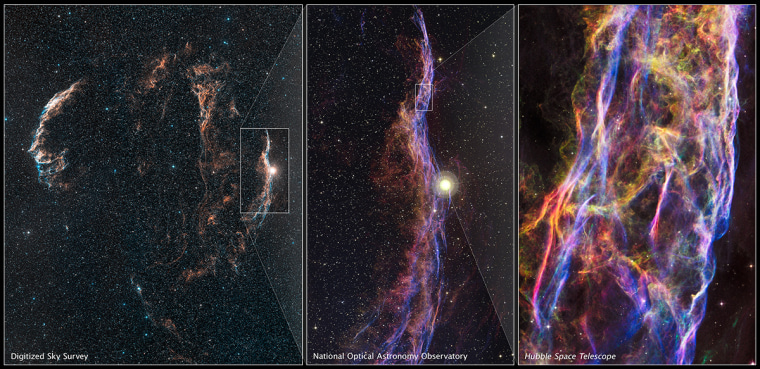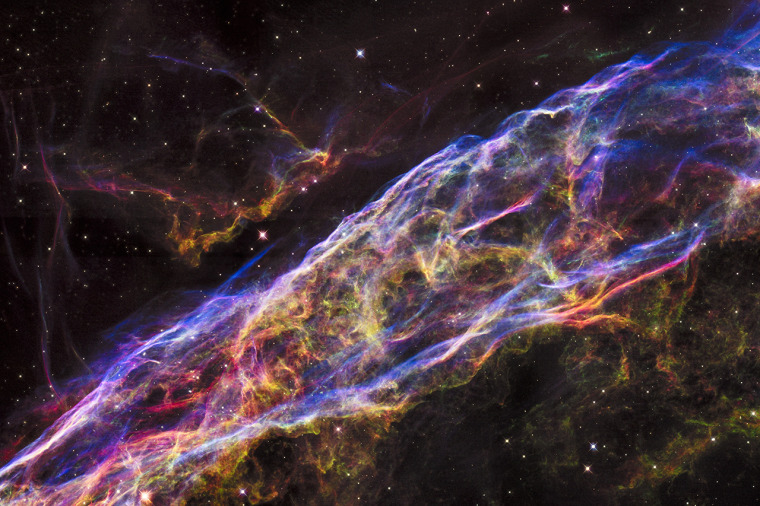The Hubble Space Telescope is at it again. On Thursday NASA released an updated image of the Veil Nebula, a cloud of gas and dust in the constellation Cygnus left over from a star that exploded almost 8,000 years ago.
This image is in "false color" to highlight the different elements it's composed of - in this image, hydrogen is in red, sulfur is green, and oxygen is blue. False color images are extremely useful to astronomers because the gas composition of a nebula or galaxy can tell us a lot about how that object evolved and the processes going on in its immediate environment. The smooth, bright blue lines outlining the structure mark the current front of the shock wave created by the original supernova. The more diffuse red and green structures in the interior of the nebula are cooling and fading after the shock passed through them long ago. A more detailed discussion of this image can be found in this ESA article.
To get a full sense of the 3D structure of the nebula, check out this fly-through created by the amazing visualization team at the Space Telescope Science Institute.
The Veil Nebula is actually just a tiny, tiny part of a much larger structure known as the Cygnus Loop. If you could see the entire loop with your own eyes in the night sky, one side to the other would stretch over an area the size of six full moons.

You can download your very own version of these images to capture your imagination at will from here.
And now for some more geek from the week:
- What does the giraffe say? Turns out they "hum".
- Penguins are all about the beaks when it comes to hooking up.
- Speaking of penguins, you can help scientists classify and annotate penguins as part of this citizen science project.
- A newly discovered dinosaur lived above the arctic circle in Alaska, back when that area was a lot more temperate.
- Neanderthals had a thing for birds.
- The enamel on your teeth evolved from fish scales. Does that leave a bad taste in your mouth?
- A study of London's Tube system finds trains should move slower in order to increase the efficiency of the overall public transportation system in the city.
- Modeling human stampedes as a fluid dynamics problem.
- Scientists are using the Sun as a way to image and study supersonic shock waves from high performance jets.
- Two amateur astronomers took this stunning photo of the Andromeda galaxy from here on Earth.
- Are we missing alien communication signals because they are encrypted?
Keep on geeking!
@Summer_Ash, In-house Astrophysicist
